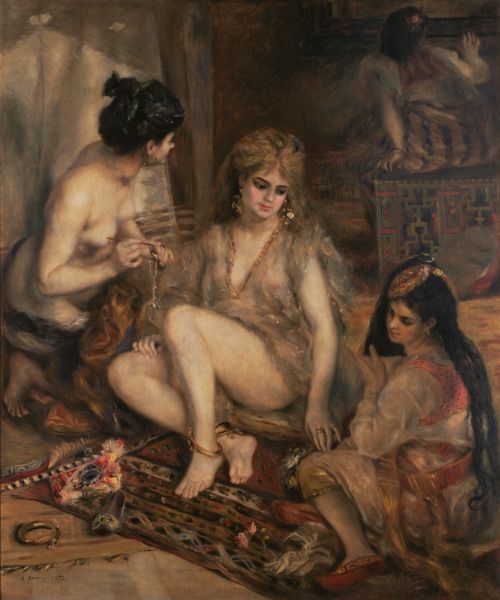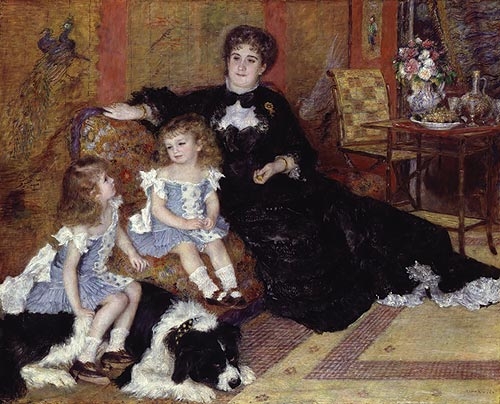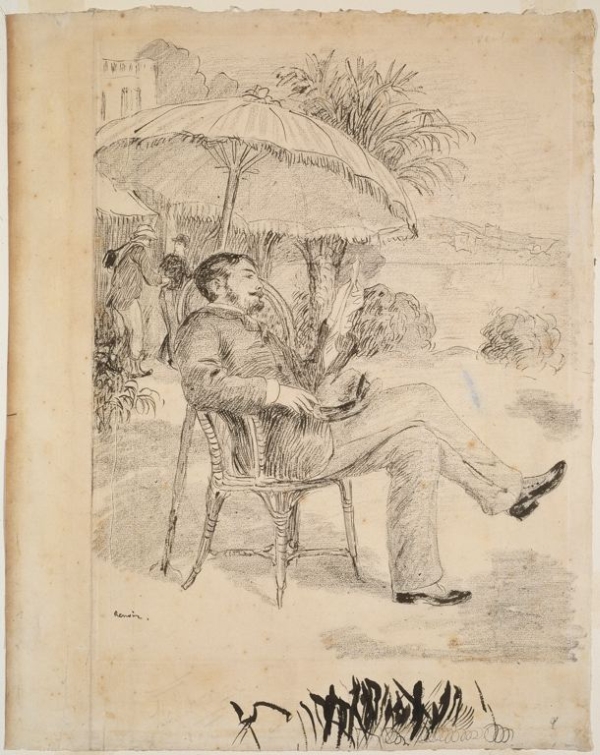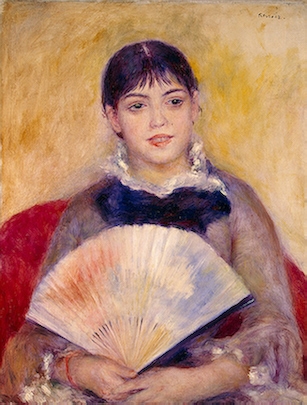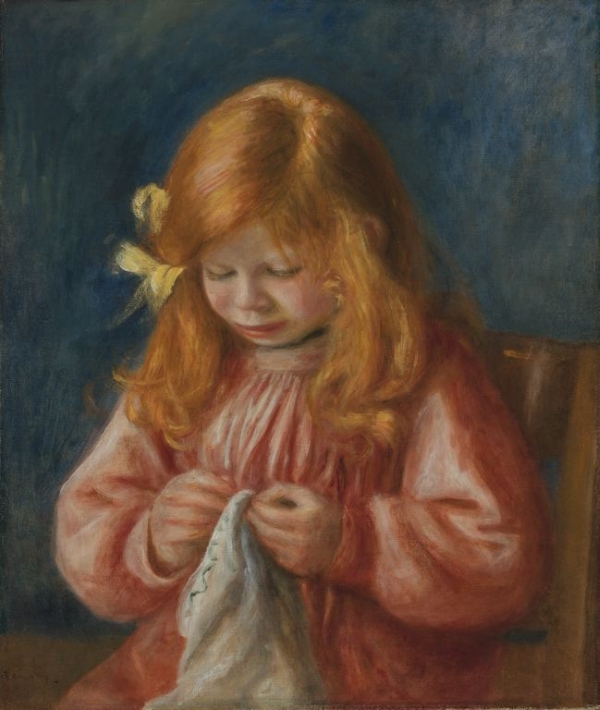Often considered the most exuberant and sensuous of the Impressionists, Pierre-Auguste Renoir came from a family of working-class artisans. Renoir was the only one among his peers who could not rely on financial help from his family to start a career as an artist. Renoir's father was a tailor, and Renoir's mother a seamstress. The family moved from Limoges to Paris in 1845 to try to make more money.
According to Pierre-Auguste's younger brother Edmond:
"We lived on the rue d'Argenteuil, in a flat scarcely large enough to hold all seven of us. Most happily, an additional room of sloping ceilings on the sixth floor of the house devolved upon my brother and me. In our little garret we were masters and we profited by it, arguing until late into the night without our father interfering as before, to make us be quiet and to put out our little lamp.
We were dying with desire to instruct ourselves; evening courses on all subjects, including drawing, did not satisfy us, and endless reading was added in our little attic. Lying in bed, we devoured old volumes part of the night, questioning each other, book in hand, without stop.
The flair of Auguste for drawing manifested itself at an early age. As a child, he stole colored crayons from our father who was then established as a tailor, rue de la Bibliothèque, near the Palais Royale. Later, at school, he enlivened his copybooks with marginal sketches. The teacher, instead of reprimanding him, begged our parents not to oppose the lad, and added, 'All that I ask is that you give me the copybook when it is filled.'"
All the children in the Renoir family had to work from an early age. Renoir was self-conscious about his background. As late as his 30s, after worldly success and maturity, Renoir referred to himself as "a workman among painters."
When Renoir was thirteen years old, his father got Pierre-Auguste an apprenticeship at the Lévy Brothers porcelain factory on rue Vielle du Temple. Renoir copied in miniature designs by François Boucher on porcelain plates, then was promoted to painting religious scenes on cloth panels, which hung in churches. As an apprentice, Renoir also decoratively painted blinds and fans. The blinds were used instead of stained-glass windows in churches in Latin America. Pierre-Auguste Renoir told Julius Meier-Graefe (author of the biography Auguste Renoir, Paris, 1912) that he received thirty francs per blind.
Renoir's talent at copying in miniature after eighteenth century Rococo masters was evident to all. According to Pierre-Auguste's brother Edmond,
"He [Pierre-Auguste] progressed rapidly and after several months they already entrusted to the young apprentice some pieces ordinarily reserved for experienced workmen, which gave rise to some teasing; they called him in jest 'Monsieur Rubens,' and he wept because they made fun of him. It must be understood that porcelain of that period was not at all what it is today when the same subject is repeated on every piece of a service. The work was done entirely by hand, piece-by-piece, was ornamented with different subjects, often most complicated. When Auguste completed his first dessert service decorated with reproductions of paintings in the Louvre, the patron was so enchanted that he permitted him to take a plate."
Later, Renoir reflected on the impact of Watteau and Boucher on his work, saying "I am of the eighteenth century."



